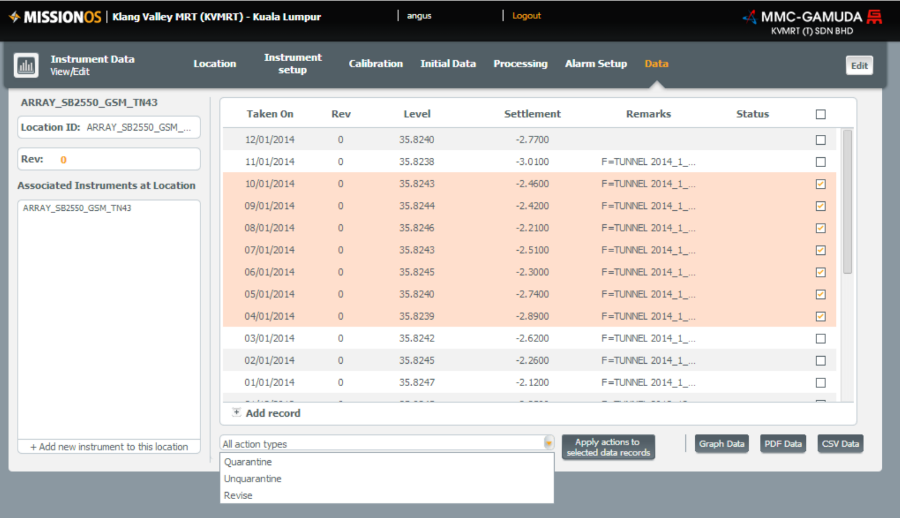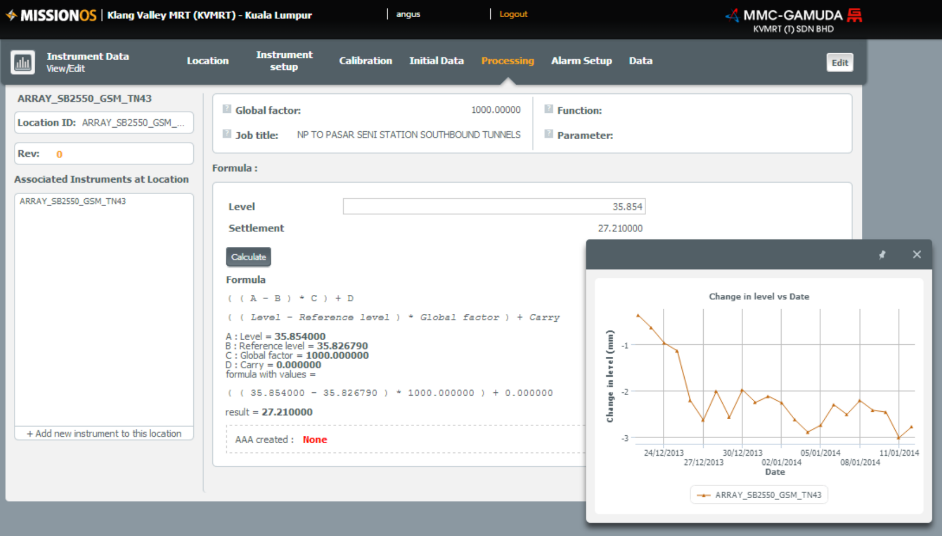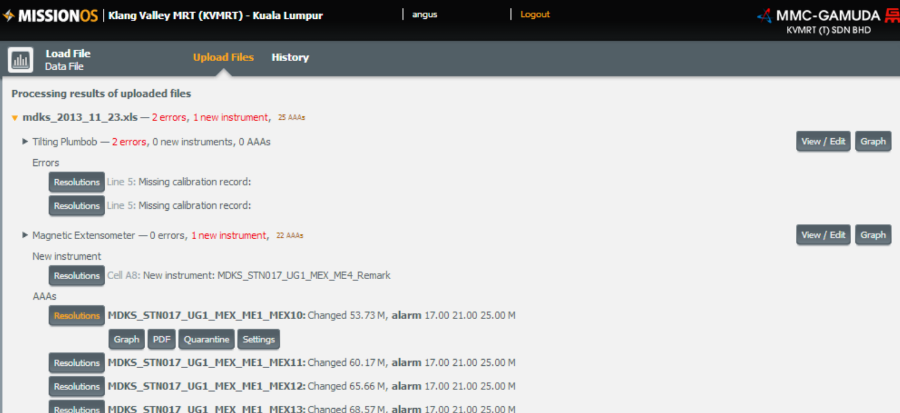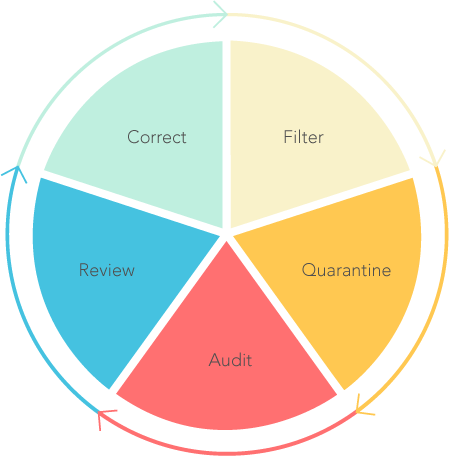Data Processing
Maxwell GeoSystems’ MissionOS provides its Clients a fully transparent data processing capability.
Instrumentation
Shift Report
Technical Construction Data
Alarms and Blogs
Instrumentation
Fully Transparent Data Processing Aimed at Minimizing the Time from Measurement to End User
All MissionOS data is loaded and stored directly on the cloud based platform. A local staging server may be used for data collation as required. MissionOS processing is multi-layered. The final public site will show the data which passes built-in audit filters and manual review. Administrators can see all the data. We have developed very sophisticated tools to deal with imperfect data and avoid spurious warnings and alarms from being generated. All processing steps are completely transparent so that users can compare with manufacturers recommendations.
Management Interface
All data management can be undertaken online and is two tiered. Changes and edits and new data are first published to an intermediate layer where the implication of the change can be viewed and approved before releasing to the general user base.

All processing steps are completely transparent and processed data can be saved at each stage so that the implications of each processing layer can be seen and evaluated.

Data Entry and Presentation
Manual entry
Manual data can be entered directly into the database from anywhere connected to the internet by GPRS, 3G or better. This means that data can be presented and audited from site.
File Management
Files of various types can be presented to the MissionOS which has audit on entry functions to identify and deal with file and data errors.

All original files are saved as part of the process. Files modified by the user are also saved in history database. Files upload can be by: Direct upload, Post to FTP, Email
Real Time Data Sources
Real time data sources which are ODBC compliant can be loaded by the MissionOS. If the sources are web addressable ie web databases or ftp sites then the information can be parsed and loaded directly and automatically. If the sources are not web addressable then a staging server is required. This staging server runs a windows application MISSION CONTROL along with schedulers to send information to the web systems for assimilation into the database. The MISSION CONTROL runs systems which manage the extraction only of updated data and send this to web servers in this way limiting the FTP traffic to manageable levels.
Filters, Quarantine and Audit
Filters can be set based on credible magnitude, rate of change (spike detection) and persistence. Data falling outside predefined ranges will be quarantined and will not give rise to alarms and will not appear in the public area. Data can also be quarantined manually. Quarantined data will be presented for action in the audit report and the MissionOS will require data managers to action quarantined data. All filters are agreed with the client before being implemented. Audit – Automated audit reports can be run by MissionOS at regular intervals to identify missing or incorrect information. These audit reports are export to excel and can be reloaded to update the data.

Post Processing
The system provides a number of post-processing stages including: Automatic corrections for benchmark movement Tidal correction of piezometers Bias correction on inclinometers Drift correction on tilt meters Thermal corrections and removal of natural drift Auto revision Correction for changing pipe levels
Review
All data entered into MissionOS goes through a two level system – at administrator level the user can see all the data including data entered by staff for approval. This must be reviewed and approved before release to the public site. The ability to upload and review data in the field improves the quality of data Correct – Incorrect data can be corrected in the system and the system will track the changes in the data with the name of the originator of the change and change date. In addition to simple corrections to typographic errors MissionOS has built in ergonomic feature and functions to address many common sources of error in instrumentation data to ensure minimal delay getting data to end users.
